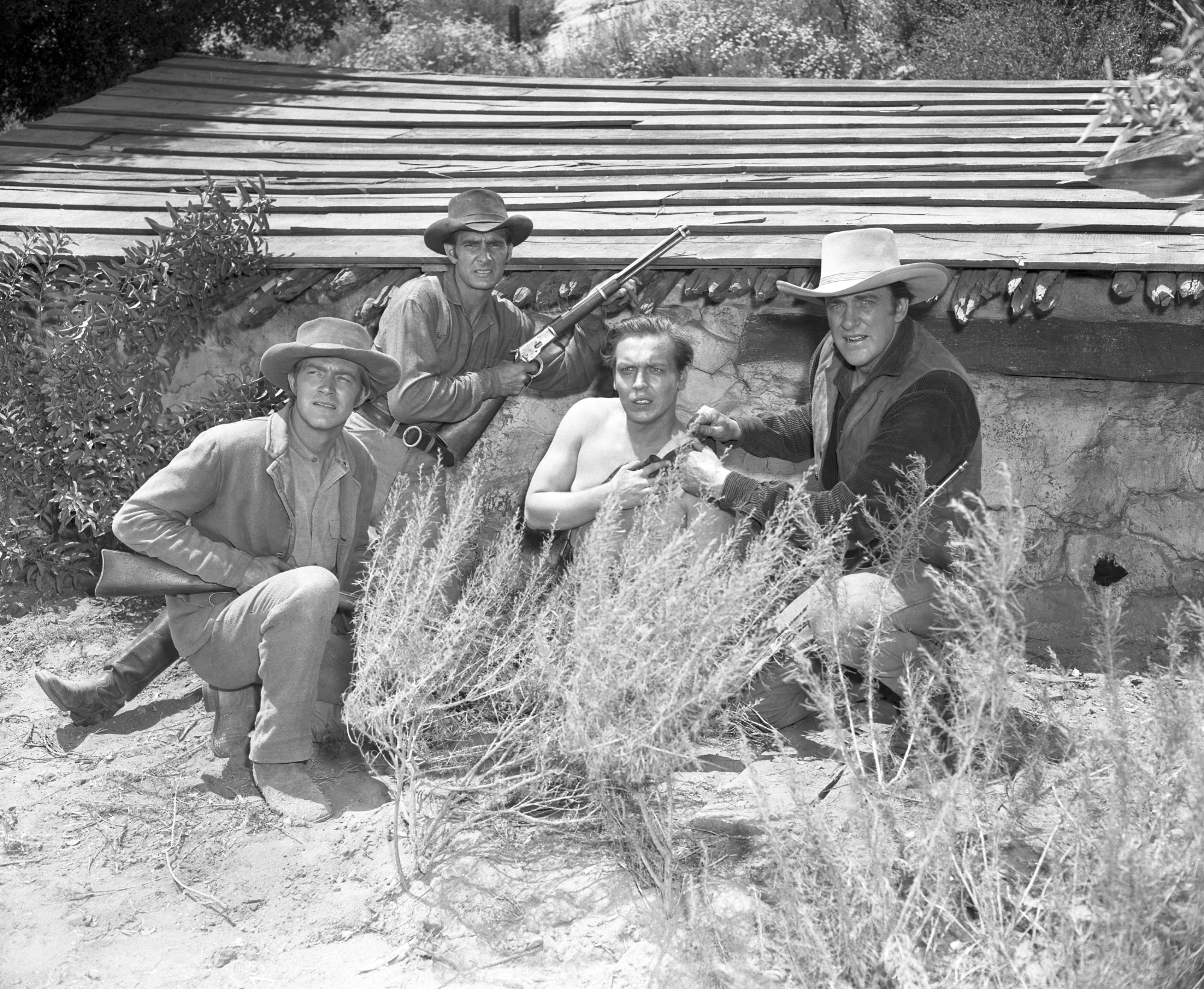Nostalgic America
10 Quintessential TV Shows From The Boomer Generation
By Bruce Berns · October 18, 2024
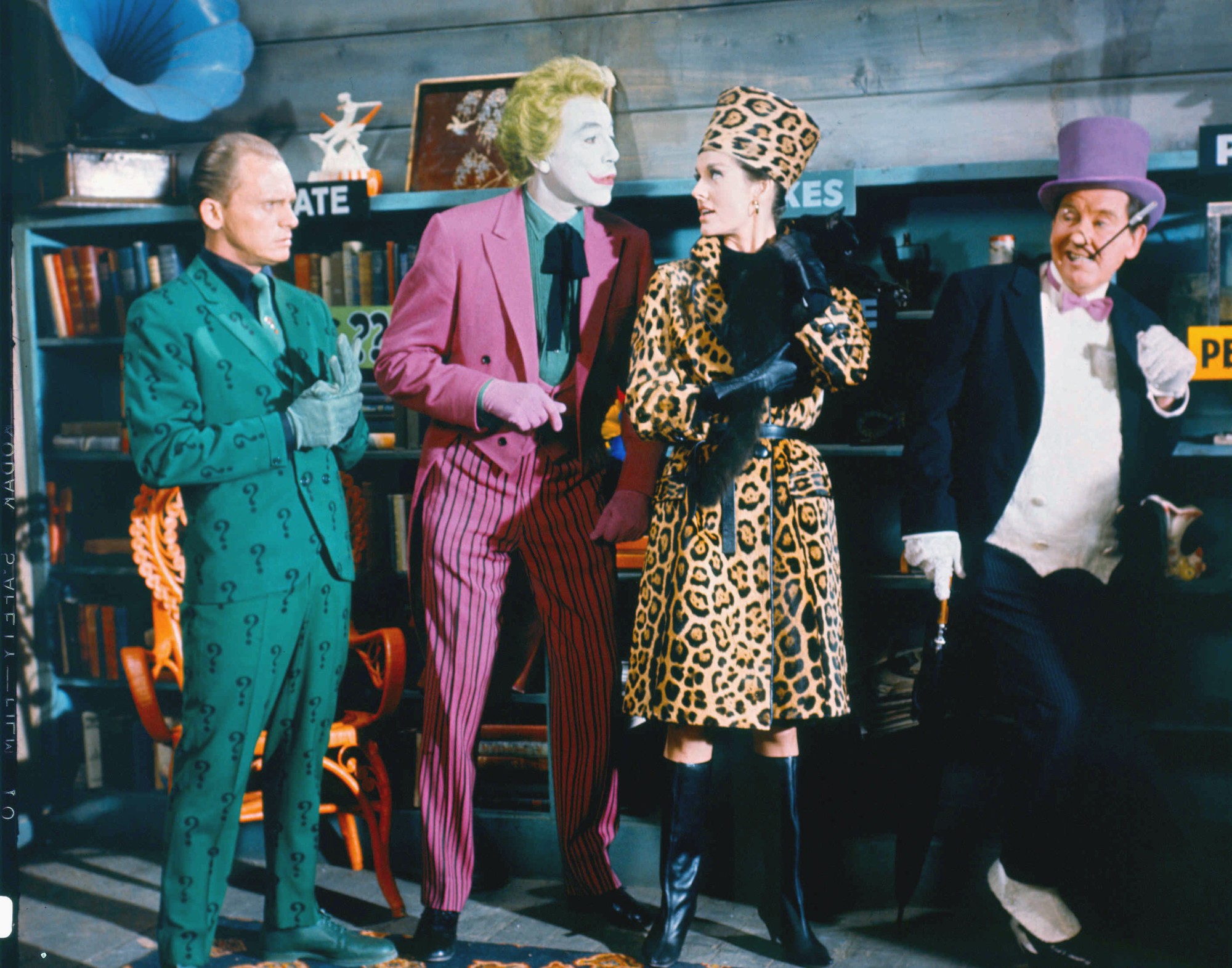
10 Quintessential TV Shows from the Boomer Generation
Ah, the boomer generation. The bygone era that, adults who were coming of age harken back to as “the good old days.” This moment in time gave us a time capsule of laughter, maybe one or two solid life lessons, and a plethora of material inserted into pop culture to keep us entertained, by the endless stream of references and jokes made regarding the characters and ways of life being portrayed. Getty Images / Nostalgic America, Inc.
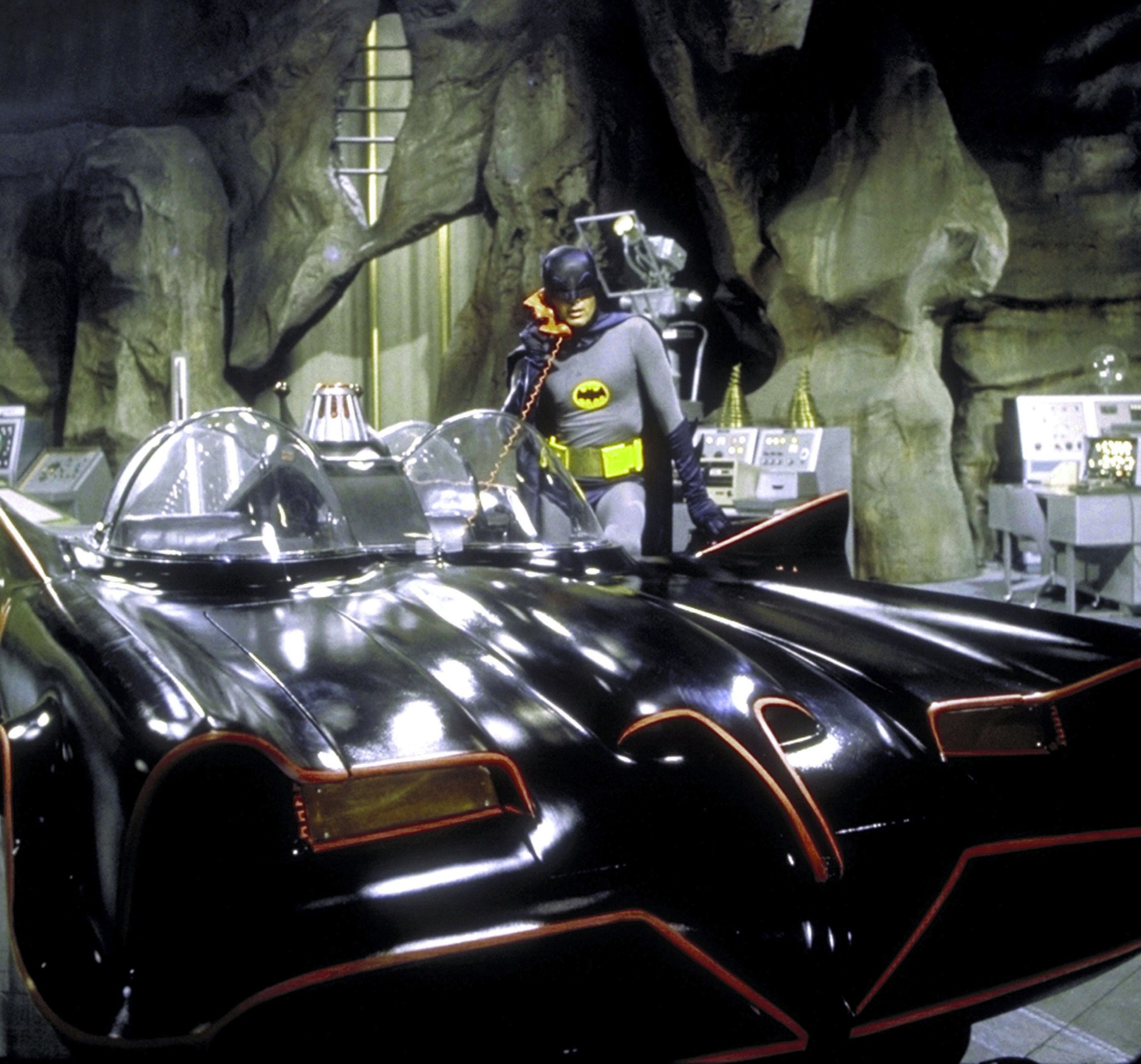
Batman (1966)
The early days of the Caped Crusader, tycoon Bruce Wayne’s crime-fighting alter ego, and his trusty sidekick Robin, clandestinely known as Dick Grayson, were chronicled here as they battled for the safety of the citizens of Gotham against criminals of comic book caliber in The Riddler, The Joker, The Penguin, Mr. Freeze, Catwoman and Egghead. However, unlike its modernized counterparts, this generation’s Batman was intentionally focused toward teaching simple, yet important values to its mostly teenage audience, such as proper diet, doing homework, and wearing seatbelts. Getty Images / Nostalgic America, Inc.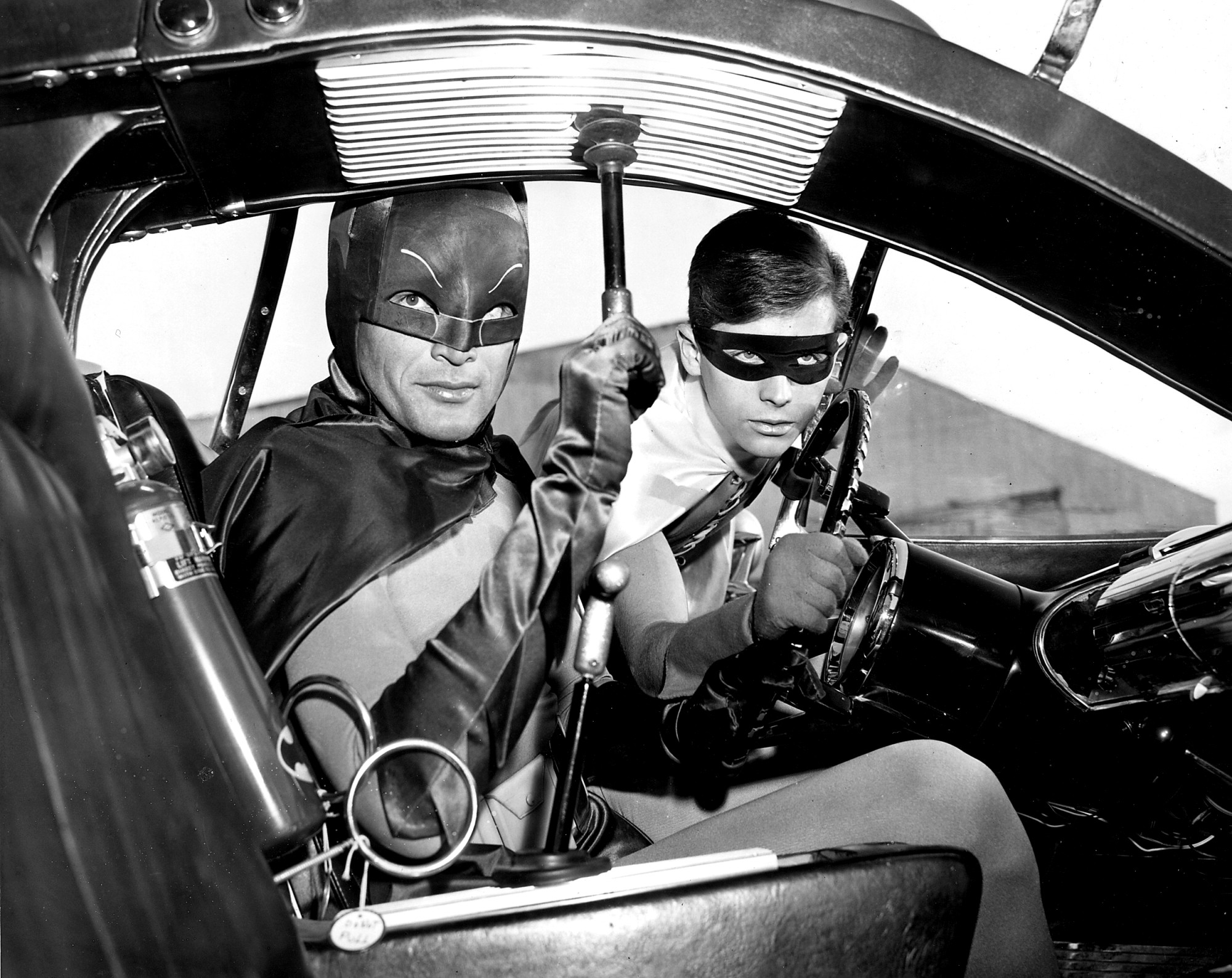
Batman and Robin
It was formulaic in that each super villain employed the use of an inordinate amount of henchmen, as well as a dreamy female cohort to share in their wickedness while boggling the police department as to what to do next to stop them. Enter team Wayne. The charm of this series lied in the execution of the absurd, wherein the bat and the bird were faced with a ridiculously mundane or trivial conflict and react in as serious a manner as possible as though it were life or death. Getty Images / Nostalgic America, Inc.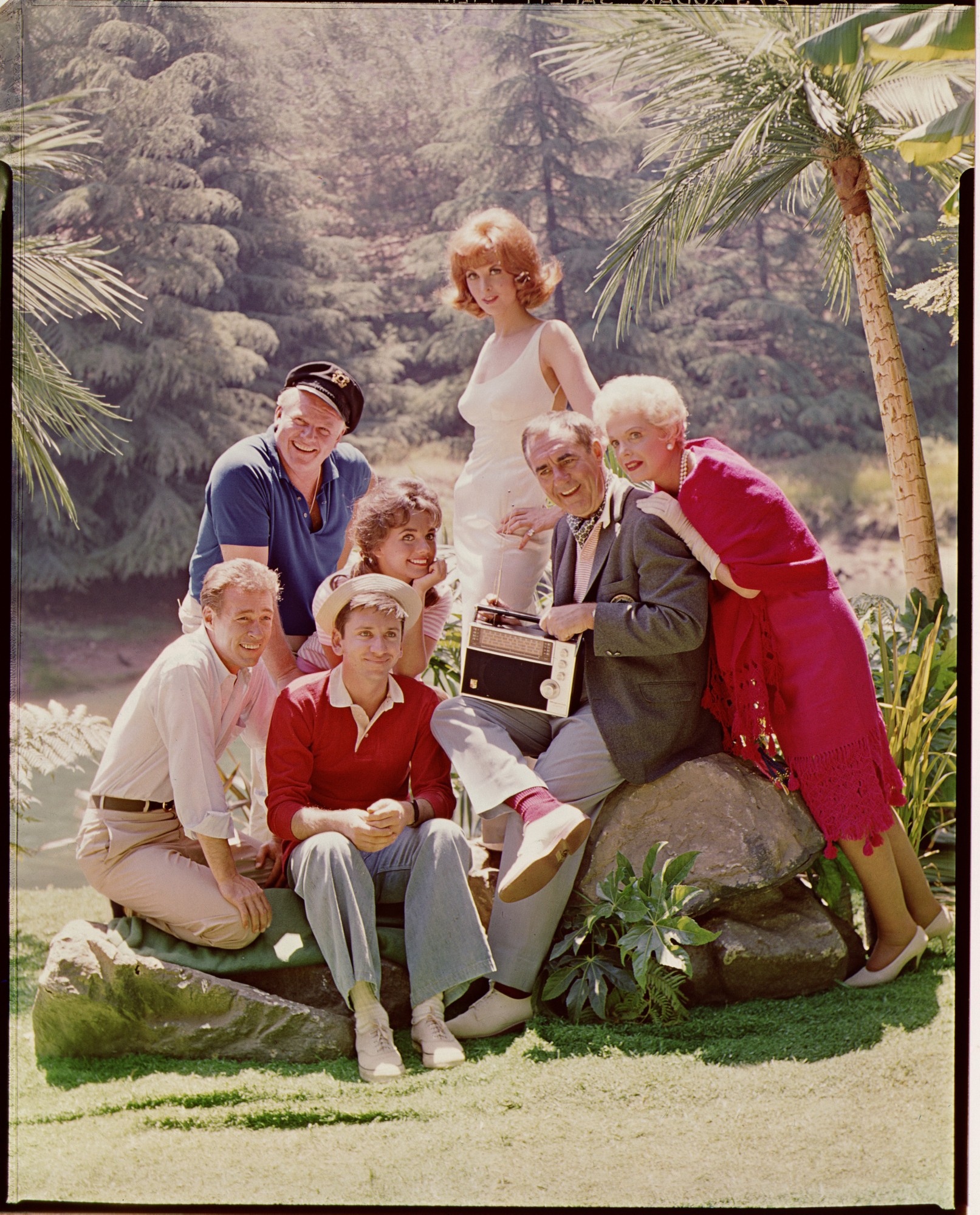
Gilligan’s Island (1964)
A mismatched group of seven strangers, all of whom are highly unlikely to have crossed paths with one another outside of this misadventure, set sail on The Minnow on what was only meant to be a three-hour tour. At the helm was the always jovial Skipper and his blundering, good-intentioned first mate, Gilligan. The troop found themselves stranded on an island after a storm. The premise of the show was all about the antics the group got up to trying to get off the island (these attempts usually unintentionally foiled by Gilligan himself). In addition to the cockamamie schemes dreamt up to escape, was the curiousness of how so many guest stars could find the island, but a rescue party couldn’t. Our shipmates included the millionaire and his wife, Mr. Thurston Howell III and movie star Ginger; sweet, sheltered country girl Mary Ann; and science teacher Mr. Hinkley, referred to as “The Professor.” Getty Images / Nostalgic America, Inc.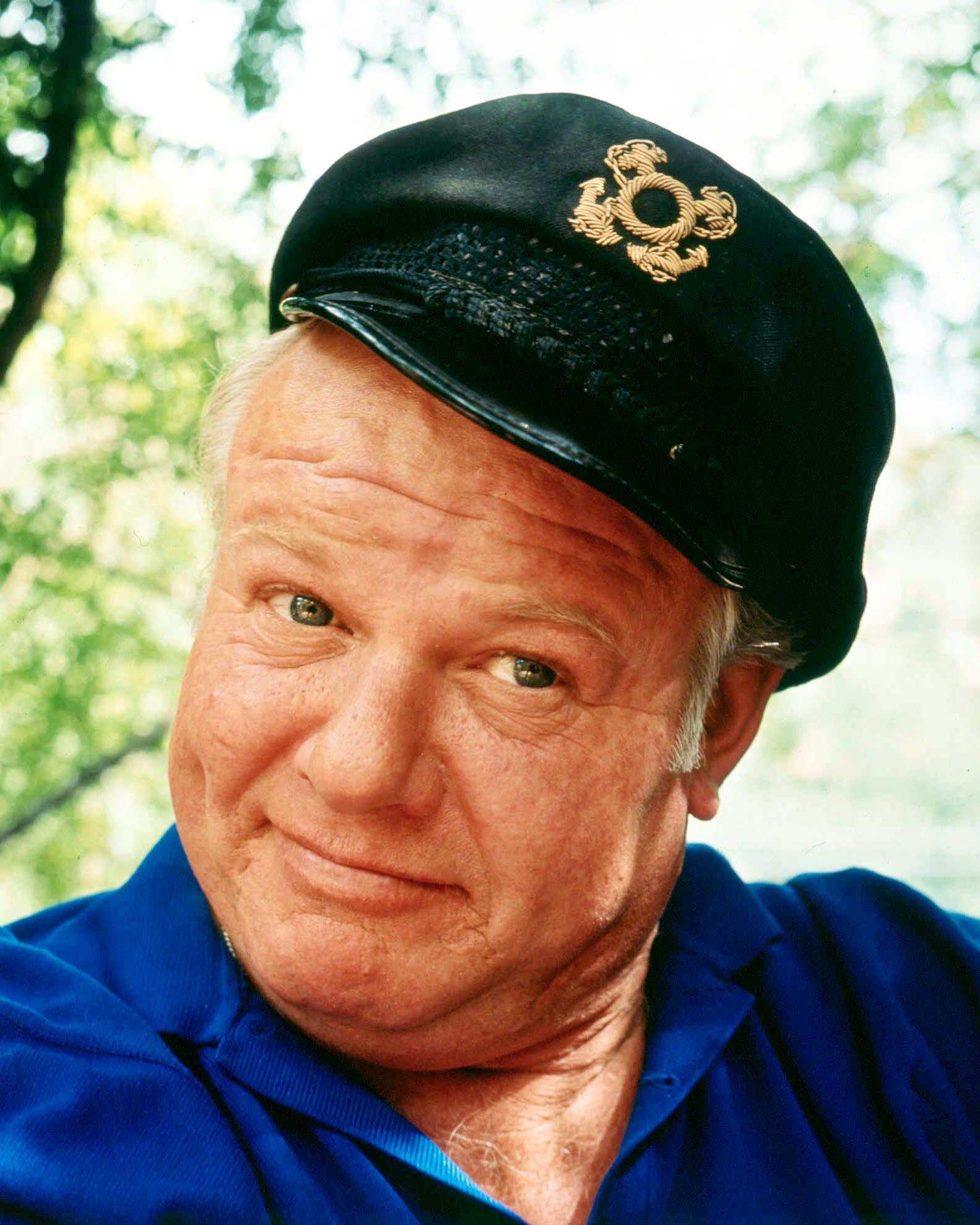
The Skipper
Every episode questioned “will they ever get off the island?” or “is this all a dream in one of the character’s minds?” The show’s creator, Sherwood Schwartz, told columnist Dan Pasternack in a 1997 interview that the whole point of Gilligan’s Island was that people from all walks of life, with many varied differences should still make the effort to get along and work together, as he believed this to be “the most important idea in the world today”. This lesson was lost on most for several years to come. Thankfully, Mr. Schwartz’s wisdom is beginning to hit the mark across entertainment genres. As for Gilligan and the rest of the gang, they were finally brought home in a two-part movie special after fifteen years on the island. Fair winds and following seas castaways. Getty Images / Nostalgic America, Inc.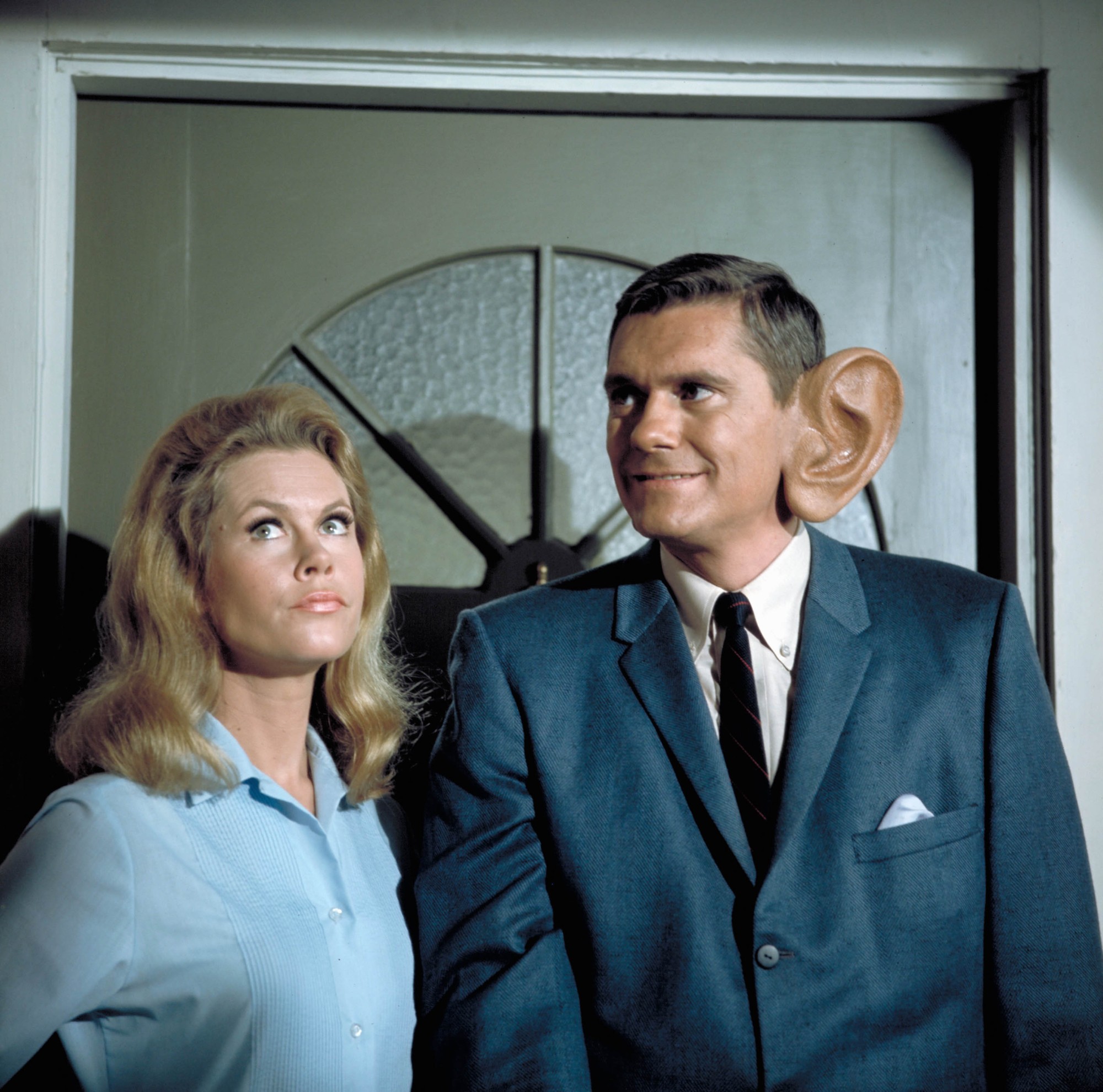
Bewitched (1964)
It’s highly plausible that there isn’t a single girl child from this generation that didn’t attempt to wriggle her nose just like Samantha Stephens to see if she too could make magic happen. Bewitched brought us the charming stay-at-home witch married to Darrin Stephens, a mere mortal / advertising executive, firmly against Sam using her magic. The show centered around their marriage and how they managed both supernatural and every-day conflict; their interactions with their neighbors; with Darrin’s boss, and finally with Samantha’s family members, most formidable of which was her mother Endora, who was at odds with her daughter being married to a mortal and abstaining from using her powers. Endora was so unnerved by her son-in-law and his influence over Sam that she routinely intentionally called him by the wrong name, like Dagwood instead of Darrin. Getty Images / Nostalgic America, Inc.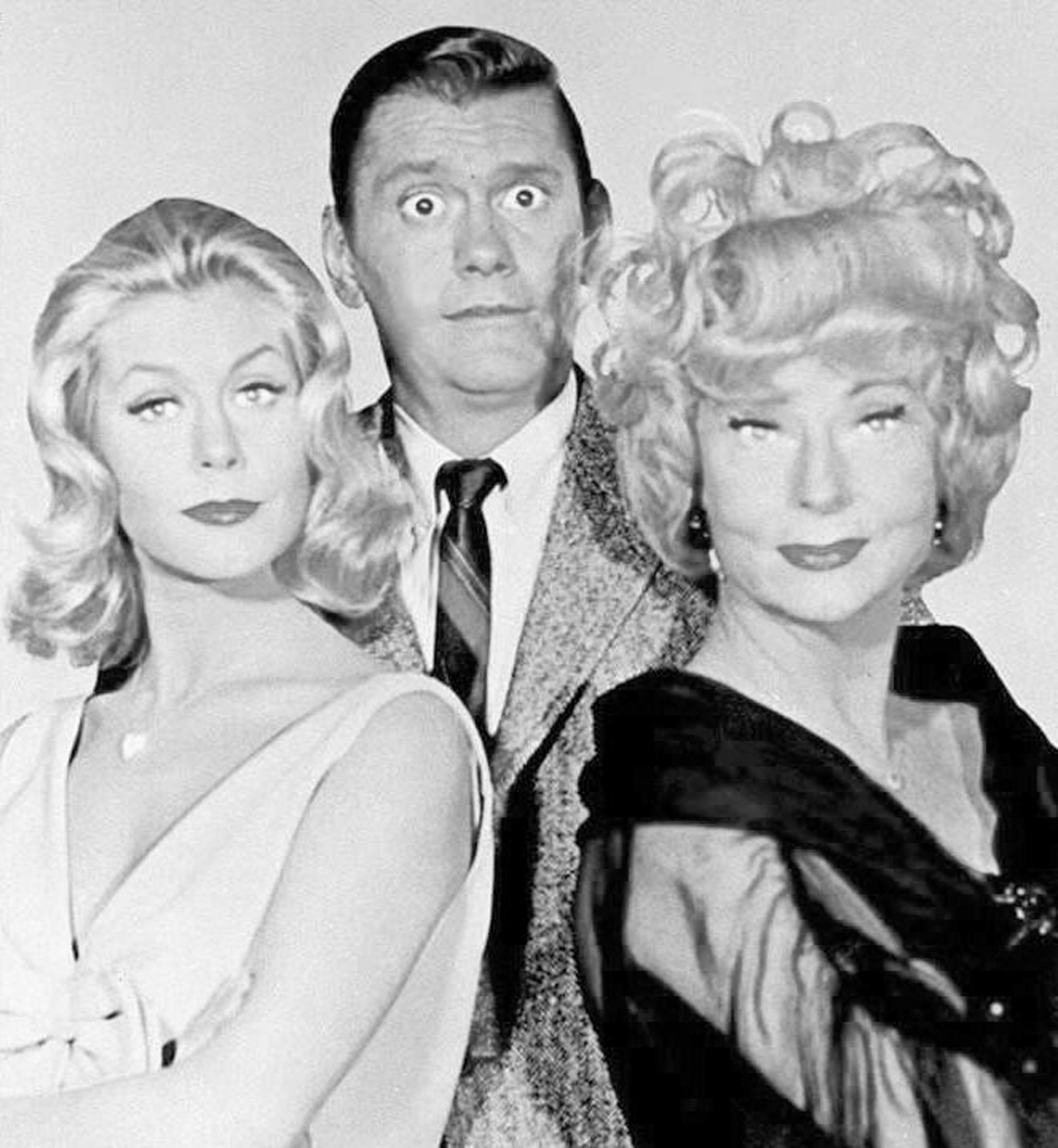
Endora comes to visit often
The nosy neighbor trope was heavily employed here as Mrs. Gladys Kravitz was endlessly spying on the young couple. Her husband, Abner, remained perpetually exasperated with her non-stop snooping, as he spent most of his time reading the paper and trying to ignore Gladys, and didn’t see the oddities she was privy to, thus believed the Stephens’ to be simply a run-of-the-mill married couple. Most of the show’s content came from Samantha’s mishaps trying, and almost always failing, to live magic-free, and the consequences and necessary clean-ups of those mishaps. Pop culture references to “hiring Mrs. Kravitz” regarding a time when prying eyes are needed stem directly from this show. Getty Images / Nostalgic America, Inc.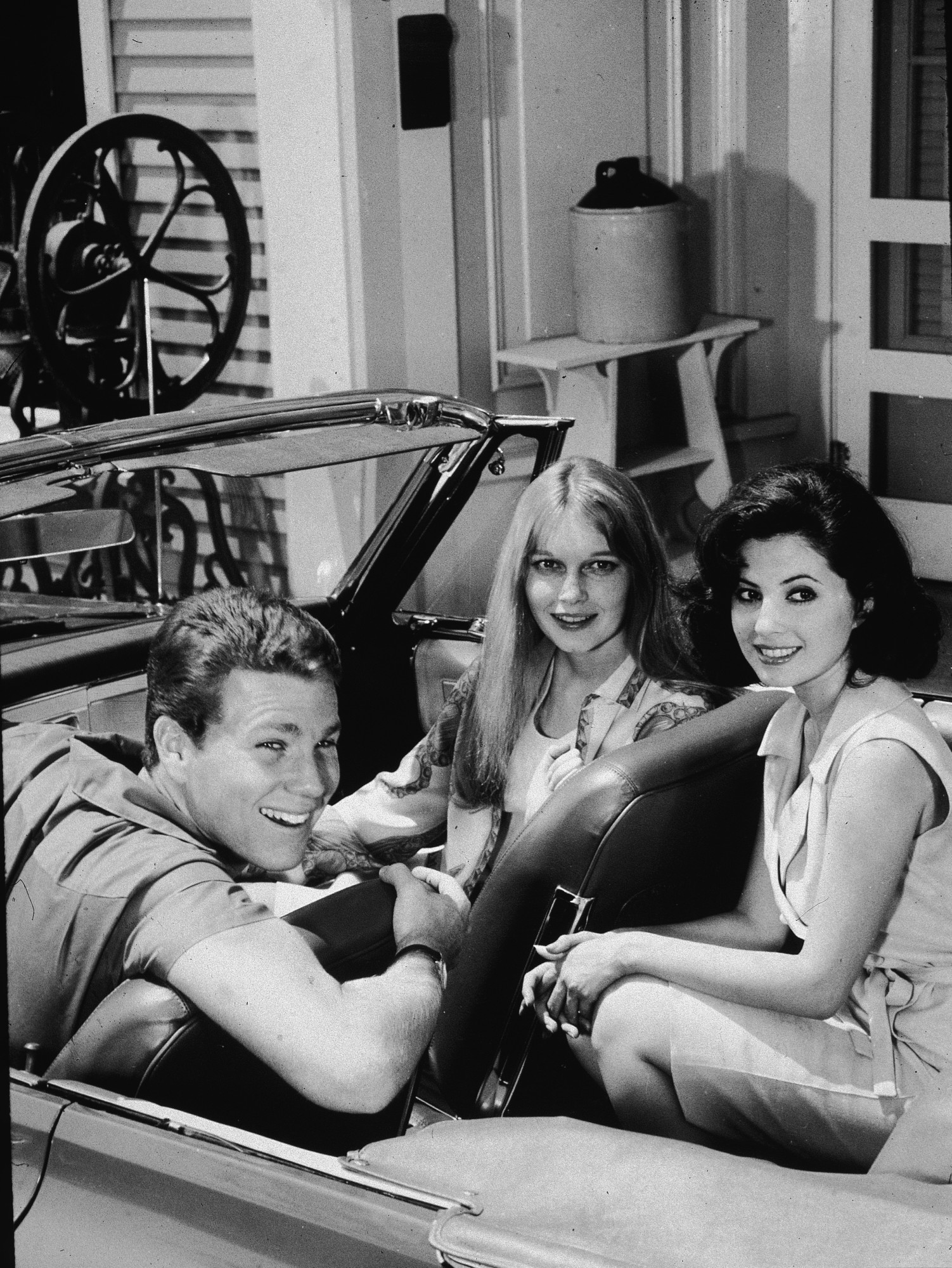
Peyton Place (1964)
Dallas. Dynasty. Melrose Place. Even the eerie David Lynch murder melodrama Twin Peaks. They all took their inspiration from Peyton Place. (Small side note: the last name of one of the writers for Twin Peaks was indeed Peyton.) This adults only, prime time soap opera was the catalyst for sexually infused story lines and intermingled scandals. Keeping in mind the time frame during which it aired, Peyton Place’s overall tone was enough to make housewives everywhere clutch their pearls and fan themselves during hot flashes. It would be considered embarrassingly modest by today’s standards if the current options for entertainment are any indication.However, the juxtaposition of the opening sequence being that of a church and church bells ringing, with the fact that most of the storylines ended up with various characters indulging in inappropriate passionate encounters still hits that satisfying irony mark; taboo subjects that are to some extent still beyond the pale today, such as the husband cheating on his wife with his secretary (though that’s become more of a trope than a shame) who is also the mother of his son’s girlfriend, teenage pregnancy that led to marriage of convenience (that ended up being unnecessary but occurred anyway because the young bride hid the fact that she had miscarried from her groom), and a murder on beachfront property were just a few of the salacious plot lines – and that was only in the very first season. Getty Images / Nostalgic America, Inc.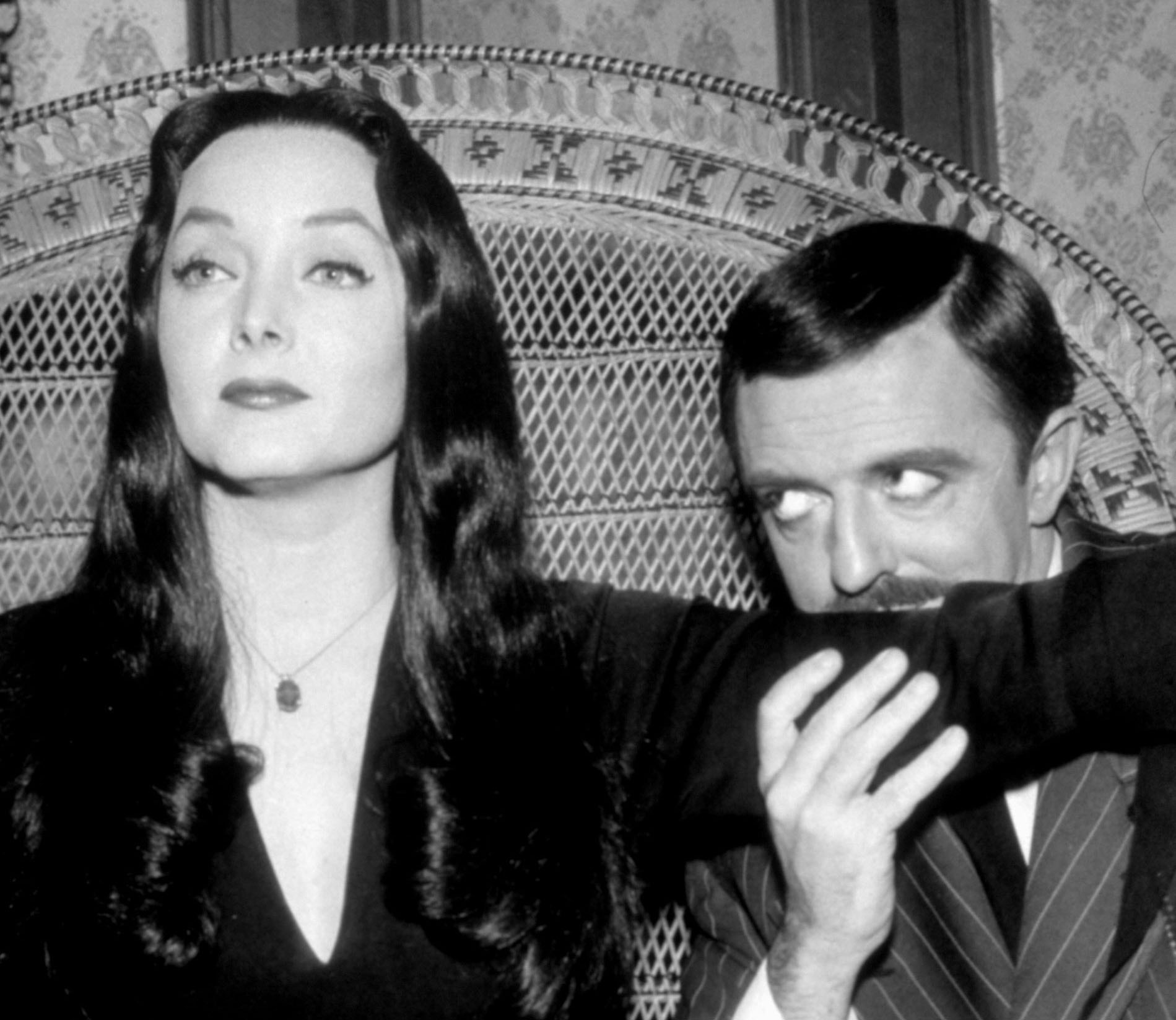
The Addams Family (1964)
Creepy, Kooky, Mysterious, Spooky. Altogether ooky. If this earworm is now stuck in your head, and you found yourself snapping along, you may have spent time as a child, or with a boomer family member, watching everyone’s favorite, exceptionally weird and ghoulish brood, The Addams Family. Gomez and Morticia loved their children unfailingly and support and encourage them in their every endeavor. They adored one another in a most ardent and feverish, yet tender fashion. (Refreshing during a time when the running stereotype was the wife as an insufferable ding-bat nag who was little more than the cook and the maid and the mom.) Additional family members included Uncle Fester, who had a fondness for explosives and lighting bulbs by placing them in his mouth, and Grandmama Addams, Gomez’s mother and an accomplished witch and knife-thrower. Getty Images / Nostalgic America, Inc.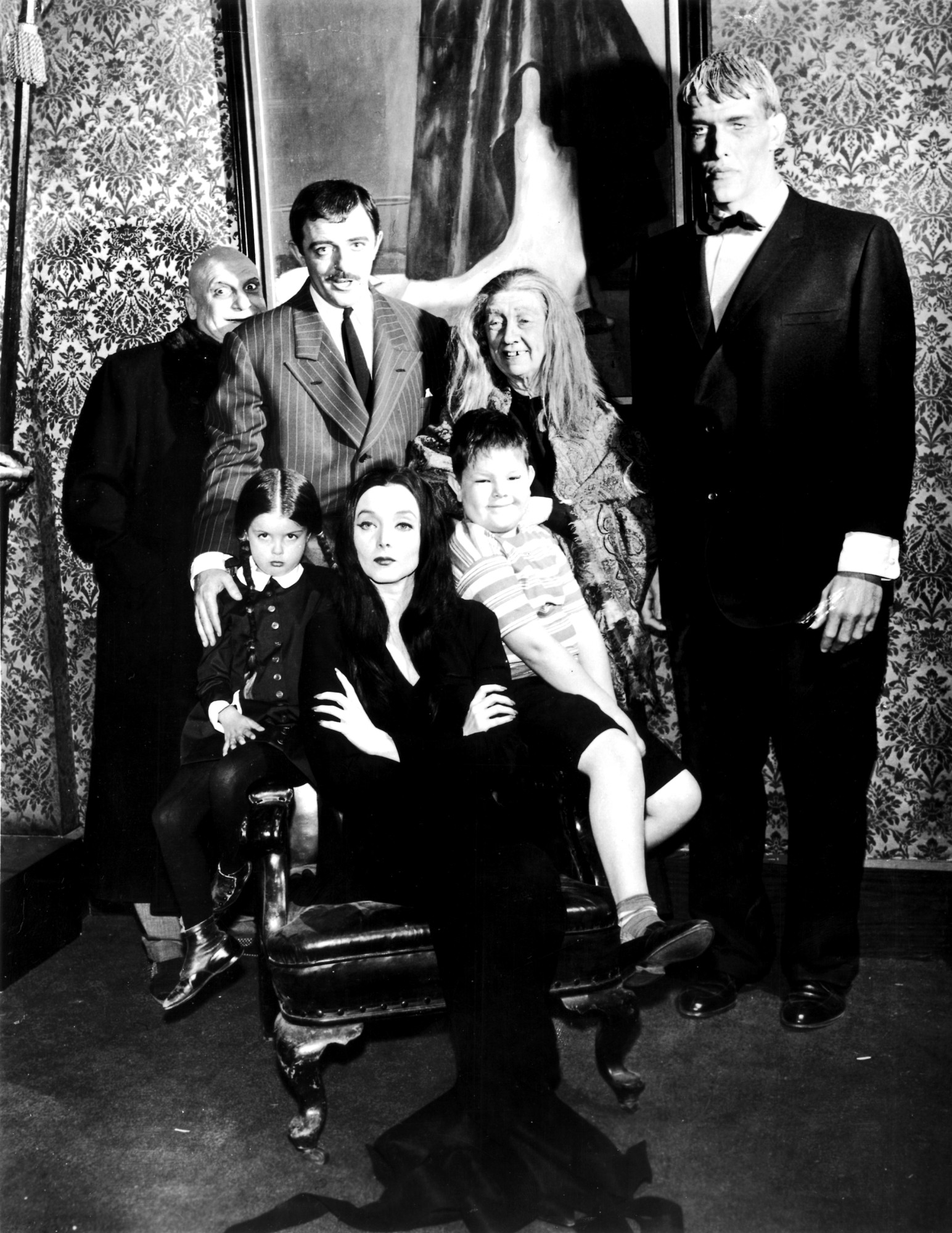
Would you invite them to Thanksgiving Dinner?
Attending to the family was Lurch, the towering and imposing butler who communicated mostly in grunts, occasionally saying “You rang?” when summoned by the butler’s bell; and Thing, an inseparable companion to Gomez since boyhood, who was only a hand minus any other appendages. The source of the show’s humor lied with the Addams’ simply living their lives, being amused with how the outside world reacted to what they perceived as entirely normal. Visitors to the Addams’ estate, who weren’t family and therefore caught unaware upon entry to just what extent the family was different, typically ran screaming from the residence, terrified of ever returning. The show, and every incarnation, thereafter, embodied the value that macabre interests, or anything that colors outside the lines of what is considered “normal,” isn’t necessarily “bad” and doesn’t equate to poor parenting or a failing family dynamic. Being unique is fabulous. Getty Images / Nostalgic America, Inc.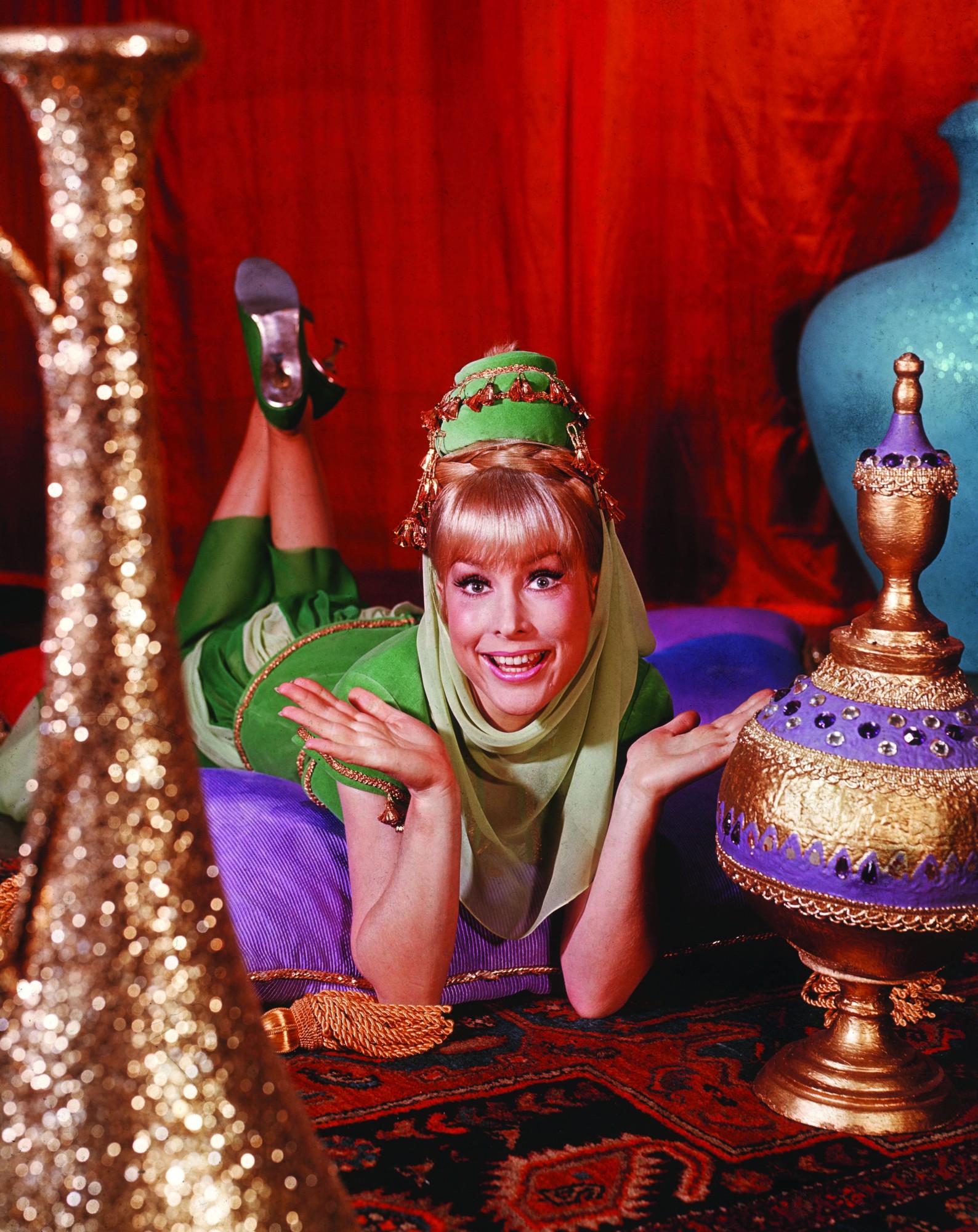
I Dream of Jeannie (1965)
In direct competition with Samantha Stephens’ nose wriggle, was Jeannie’s crossed-arm head bob making the magic happen, to the chagrin of her “master” (the man who found the bottle and released her from her velvety, gossamer prison), United States Air Force Captain Tony Nelson. The premise of I Dream of Jeanie was that Jeannie had fallen in love with the Captain (naturally, since he’s the first man she’d laid eyes on in 2000 years, and he happened to be the one to free her), and while he would have preferred to set her free, she chose to remain at his side, eager to please him. Getty Images / Nostalgic America, Inc.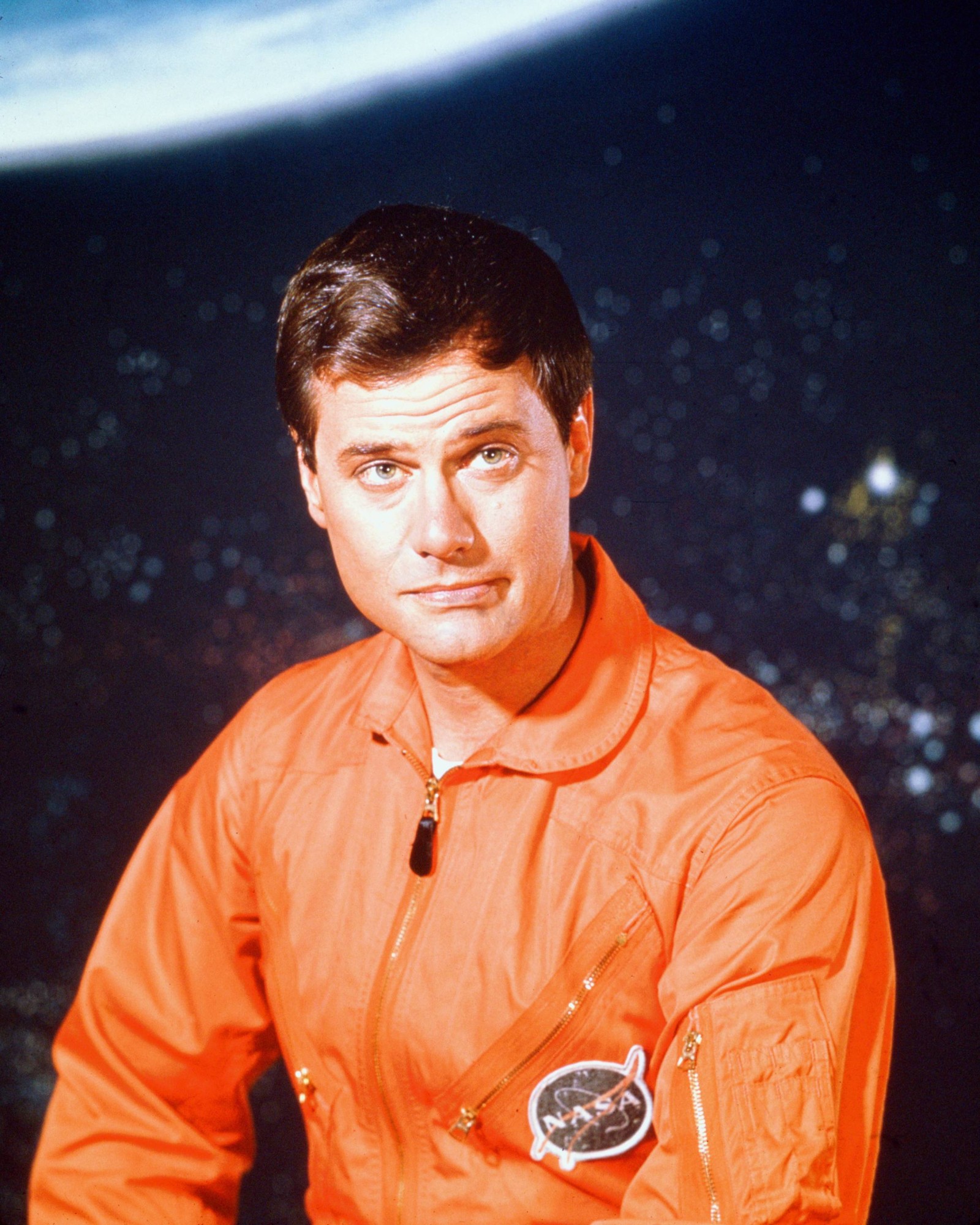
United States Air Force Captain Tony Nelson
This eagerness to please is precisely what caused all sorts of mayhem for both, as Jeannie’s efforts typically ended in a disaster that Tony was left to clean up or attempt to explain away, making him look both crazy and suspicious to the command psychiatrist, Dr. Alfred Bellows. Between Jeannie’s bottle being stolen on more than one occasion, resulting in her having a temporary new master, her twin (also named Jeannie, as are all female genies in this show’s lore) arriving on the scene to try and steal Tony for herself, and the various misadventures the duo found themselves in, Tony finally realized his own love for Jeannie, and they indeed lived happily ever after. Getty Images / Nostalgic America, Inc.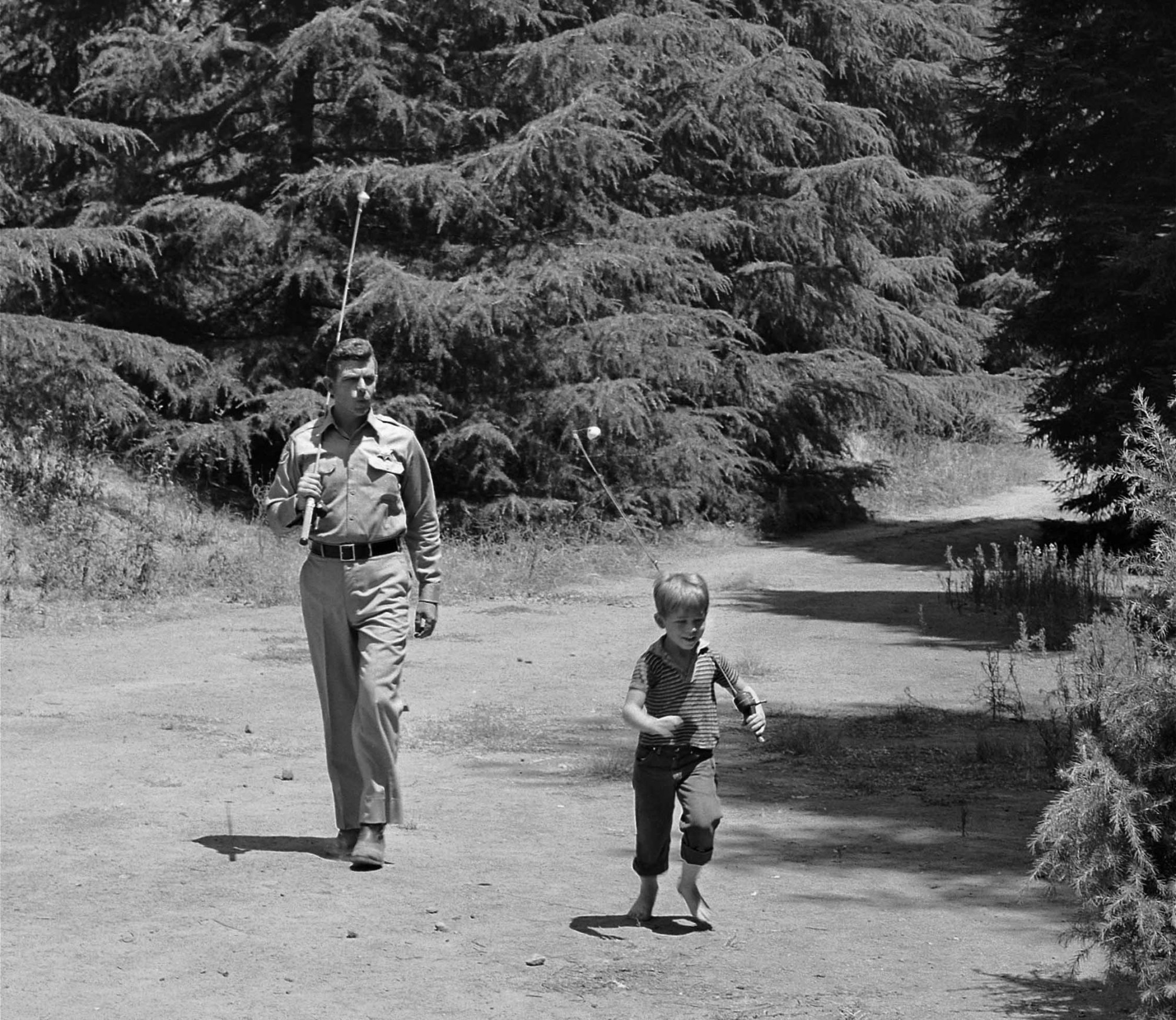
The Andy Griffith Show (1960)
The Andy Griffith Show was set in the quiet, small fictional town of Mayberry, North Carolina, where Andy Taylor was the town's local sheriff, assisted by his cousin, Barney Fife, in the role of deputy. Andy was the widowed father to Opie, and the nephew to Aunt Bee, who was also his housekeeper. Sheriff Taylor dated here and there, so there were girlfriends sprinkled in for a little razzle dazzle. The scope of the show as a whole was the various inhabitants of Mayberry getting themselves into one conundrum or another, then turning to the steadfast and ever calm and ready sheriff to sort it all out for them. Getty Images / Nostalgic America, Inc.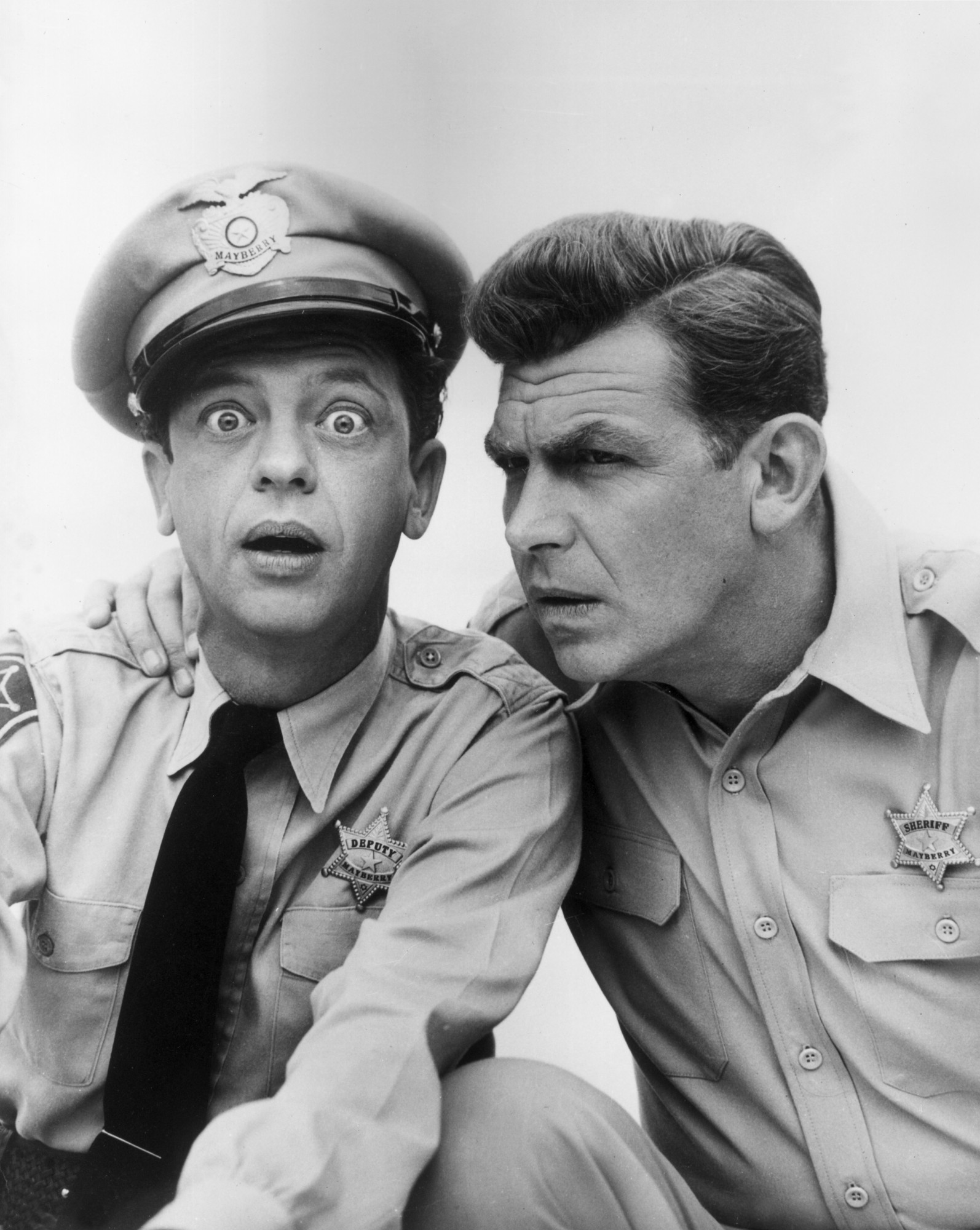
Barney Fife!!!
One of the weightier comedic plot lines involved the character Ernest T. Bass, the local muckraker hillbilly who would swing into town hootin’ and hollerin’ “Howdy-do to you and you. It's me, it's me, it's Ernest T.!” just itching to stir up trouble. Barney could also always be counted upon to inject humor, as he was as inept as he was good-intentioned. Mayberry and Sheriff Taylor are the ideal of what many from the boomer generation like to reminisce on as the good old days. (After all, who doesn't want to live somewhere safe enough to sleep with unlocked doors?) Getty Images / Nostalgic America, Inc.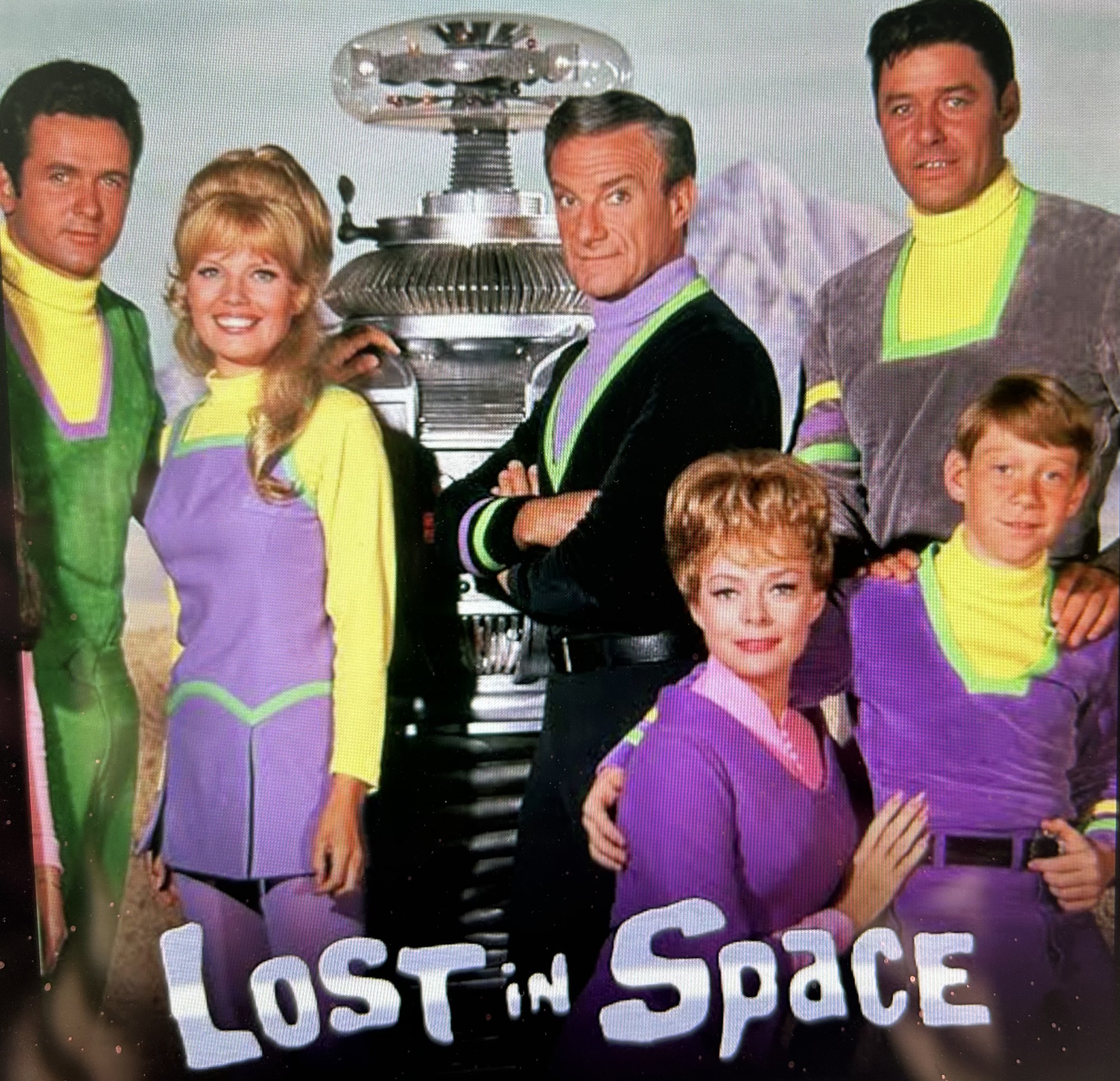
Lost in Space (1965)
“Danger Will Robinson!” This is one of the key phrases remembered from the show, uttered by the robot B9 who was charged with protecting the youngest member of the stranded Robinson family, Will. Based on the 1812 novel The Swiss Family Robinson by Johann David Wyss, Lost in Space was classic literature meets science fiction. The show was filmed in the '60s, so their vision of possibility for the future in 1997 seems incredibly far-fetched if you attempt to view the events therein through a lens of modernity. Lost in Space provided that not only were people cryogenically frozen and thawed at-will, but space colonization was a fact of life that regular families participated in. Getty Images / Nostalgic America, Inc.
They were really LOST IN SPACE!
The family’s central conflict was revealed in the title itself – they were adrift in the outer limits of space. The arc of the storyline in its entirety can best be described as a struggle to adapt and survive on the alien planet they’ve crash-landed on, Priplanus, along with the constant interference of the saboteur behind their unfortunate circumstances, Dr. Zachary Smith (a Dirk Dastardly-esque comedic and hapless villain), as well as a crash landing on another unknown world, to a final entrance to an era of free space travel capabilities where they went on adventures and visited planets of their own accord, instead of becoming bound to them due to mechanical failure. The series was canceled before any real resolution could be achieved. Therefore, at last airing in 1968, the Robinson’s remained lost in space. Getty Images / Nostalgic America, Inc.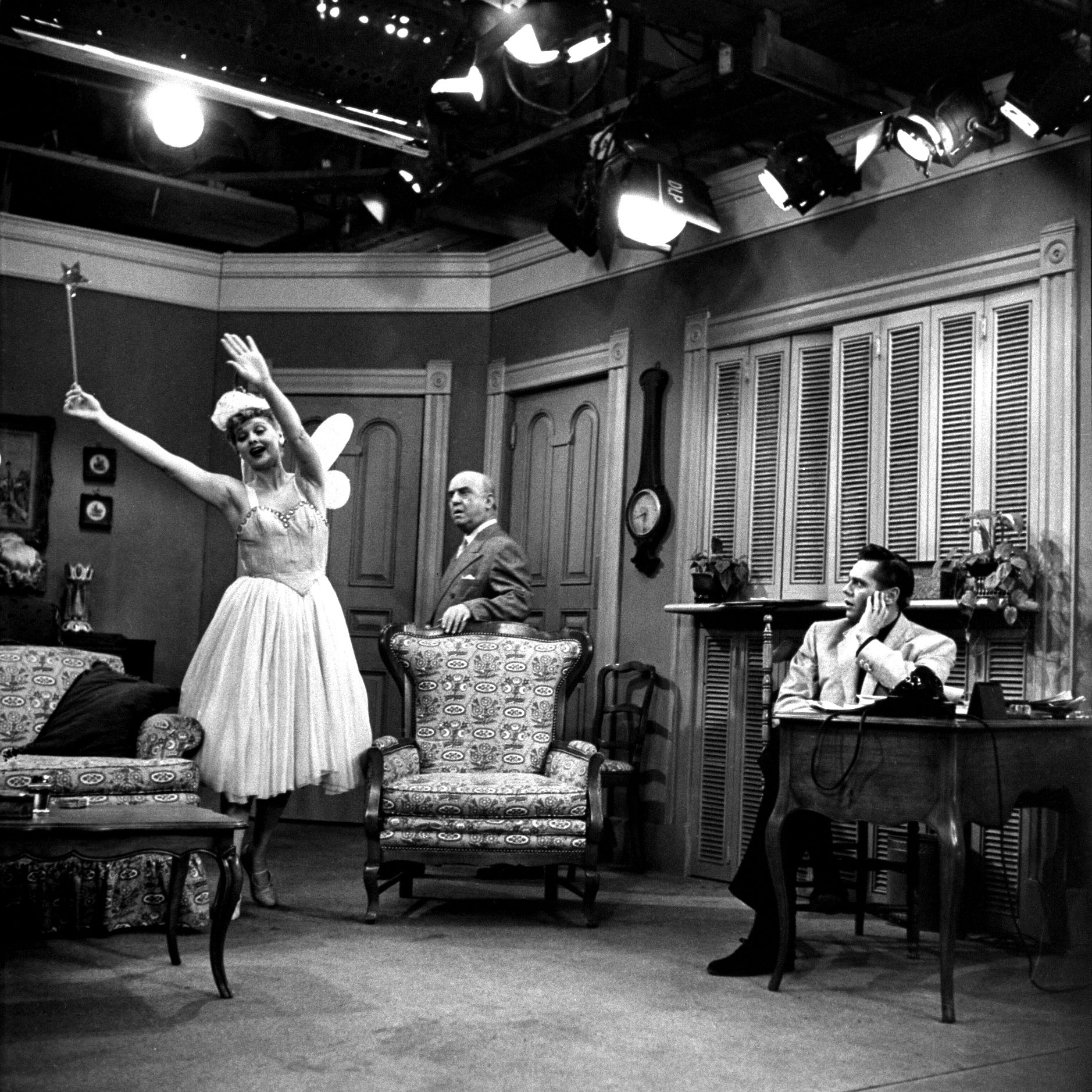
I Love Lucy (1951)
There can be no quintessential boomer television show list without the quintessential funny lady of the era, the one and only Lucille Ball. From her fiery red locks to her unmistakable comedic timing and vaudevillian movements and expressions, Lucille brought Lucy to life with undeniable spark and unforgettable mischief-making humor. Alongside her real-life husband, Desi Arnaz, the two seasoned actors not only pioneered the concept of the syndicated rerun, but they delivered one of the most memorable and still beloved sitcoms of all time, I Love Lucy. Getty Images / Nostalgic America, Inc.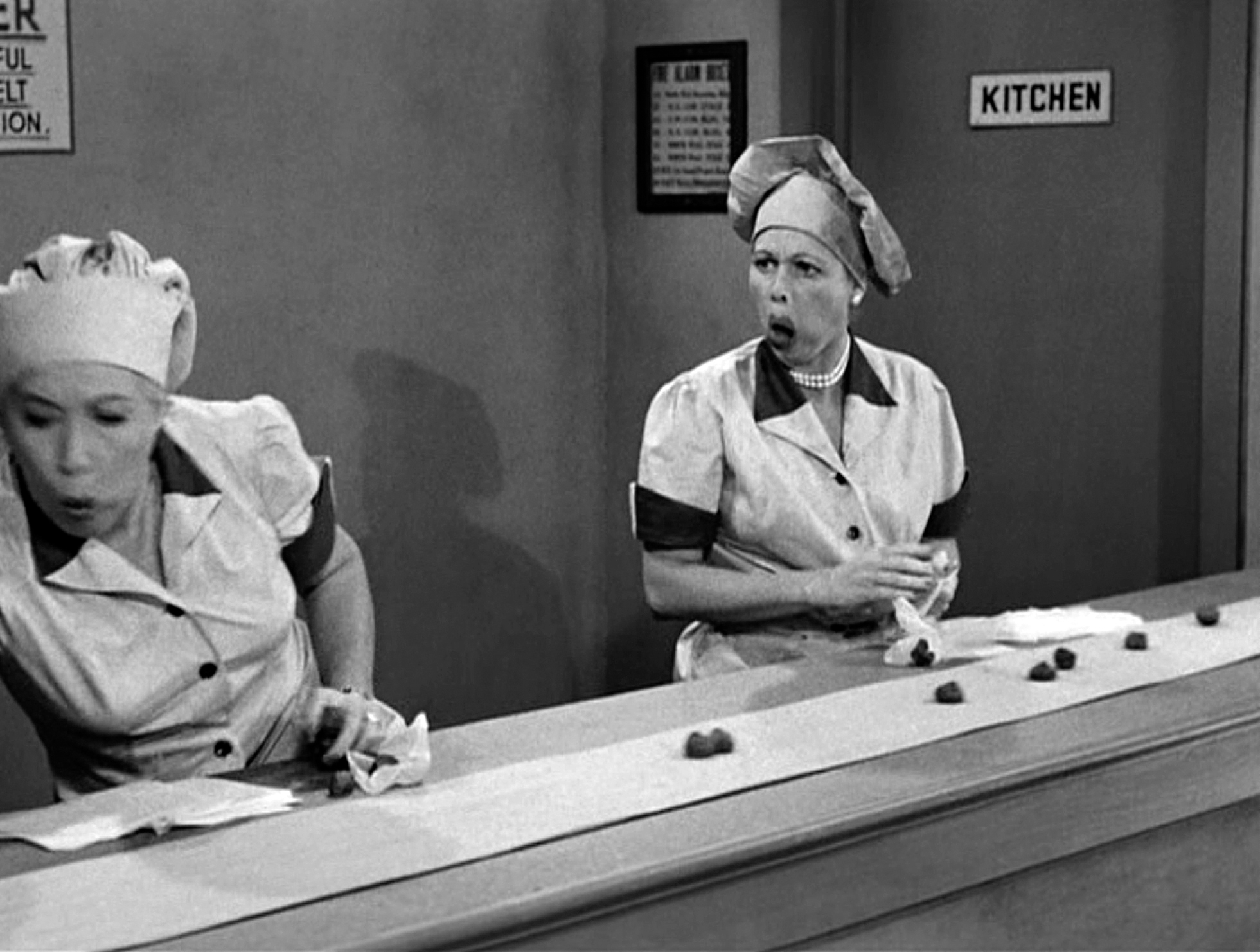
Lucy and Ethel in the famous "Candy Scene"
Viewers tuned in every Monday at 9 pm to watch Lucy scheme and plot hilarious ways of trying to get herself involved with her husband’s band in his nightclub, The Tropicana, which he renamed Club Babalu after its purchase. Stand out moments, such as Lucy clownishly stomping about in a vat of grapes learning to macerate them for winemaking, and Lucy in a chocolate factory shoving large amounts of candy into her mouth as she cannot keep up with the conveyor belt they are being sorted on, are at the forefront of the previews shown anytime the show crosses present-day television screens. I Love Lucy was, and remains, nothing short of iconic. Getty Images / Nostalgic America, Inc.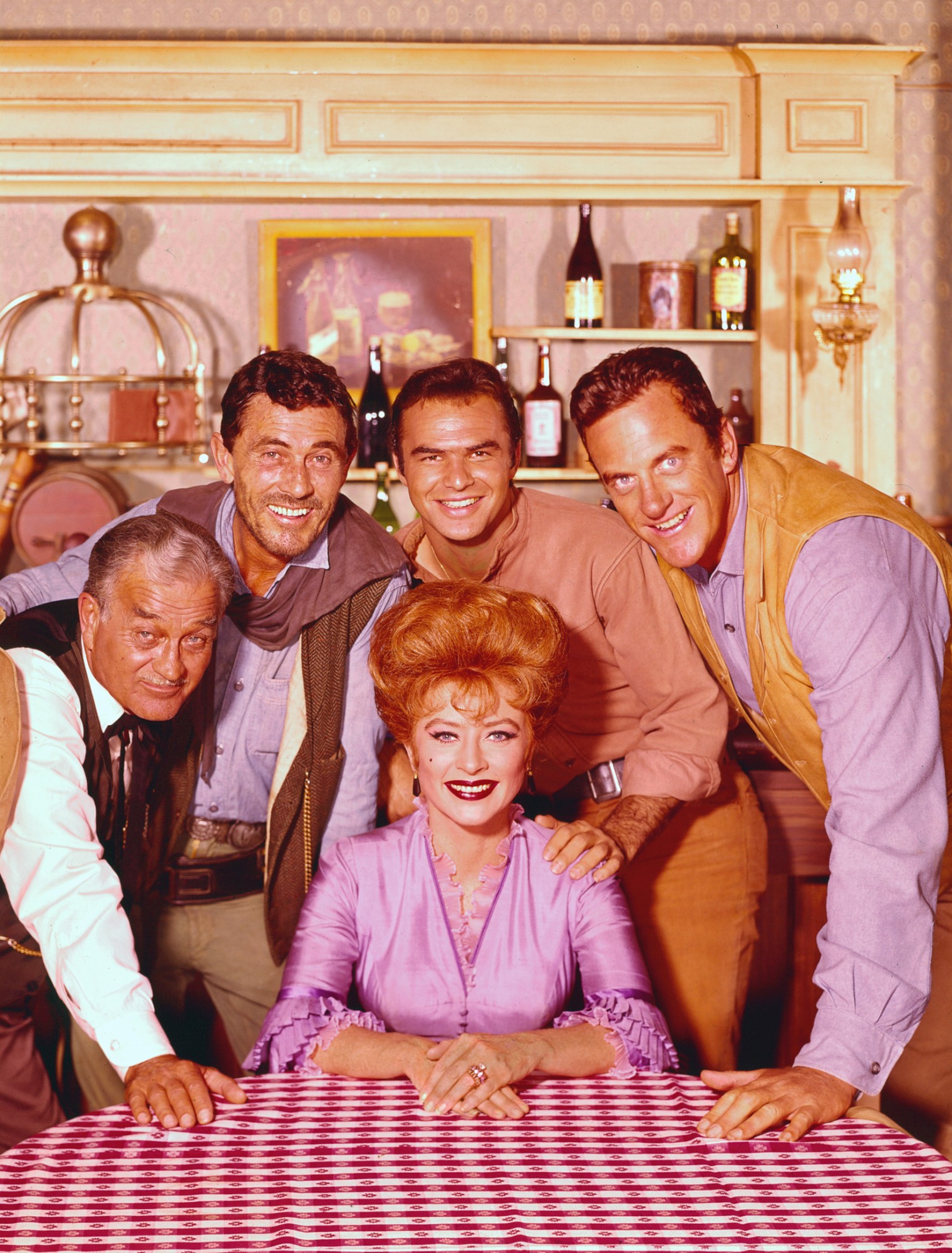
Gunsmoke (1955)
Set in the unforgiving frontier of 1870s Dodge City, Kansas, Gunsmoke’s Marshal Matt Dillon kept dedicated watch over the denizens of the settlement, doing his utmost to maintain the fragile balance of law and order in the time of shoot first, question later. The central conflicts revolved around the chaos injected into the lives of the bonded citizens of Dodge City when trouble came knocking on the heels of an outsider. Writers were also keen to employ the concept of “frontier justice” wherein right and wrong are muddied and ambiguous, and you simply lived by your wits, often resulting in gunfights since the law of the land hadn’t provided satisfactory remedy. Getty Images / Nostalgic America, Inc.